Canvases
キャンバス
Canvases
CATEGORIES
A canvas is a medium for oil painting made of cloth woven from the fibers such as flax, the top surface of which has been treated. The word can also refer to such a cloth after it has been attached to a wooden rectangle (a stretched canvas).
Compared to other media such as walls and boards, canvases are characterized by their light weight, which makes them easy to move. Both natural fibers such as flax and cotton and synthetic fibers such as nylon are used in the making of the canvases. Flax is particularly strong and is not overly affected by stretching or contact with oils. The fibers are segmented, like bamboo, and the undercoating adheres well without moving the weave, making it ideal for use in canvases. Cotton is less expensive than flax cloth, and results in a cloth with a smooth surface. Unfortunately, it is susceptible to contraction and expansion resulting from humidity and it is not well suited for thick applications of oil-based paints. For their part, synthetic fibers do not contract or expand much from water, so they are well suited for water-based materials such as acrylic paints. These fibers are primarily woven using the plain-weave technique. In that technique, the texture varies greatly depending on the thickness of the threads used and on the thread count, and will thus have a significant impact on the texture of the painting. The names used to distinguish the different textures are: “coarse,” for rough textures; “fine,” for smooth textures; and “medium,” for an in-between texture. The texture determines the smoothness of the surface.
When using cloth for a canvas, it is essential to treat the surface first (most canvases available commercially have already been treated.) The treatment involves smoothing the surface using glue, for example, to prevent oxidation when the canvas and the oils in the paints come in direct contact, and to fix the texture. In addition, one would apply a basecoat of paint in order to increase durability and enhance the color of the paints. Coating a canvas with paint made of white pigment blended with drying oil will produce a non-absorbent surface suitable for oil-based paints, while coating a canvas with white paint blended with glue solution will produce an absorbent canvas suitable for water-based paints. Coating a canvas with paint made of white pigment blended with an emulsion of a water-based glue solution and drying oil that has undergone emulsion dispersion makes it semi-absorbent, which is appropriate for combined techniques such as tempera. Finally, coating a canvas with paint made of white pigment blended with an acrylic emulsion produces a surface with the same semi-absorptivity, which is suitable for acrylic paints.
While it is possible to paint with oil-based paints on a canvas for water-based materials, the reverse is inadvisable, as water-based paints used on a canvas prepared for oils can result in peeling. Also, when stretching a canvas on to a wooden frame, one should use a canvas that is larger than the frame.
Canvases are available at most art supply stores.
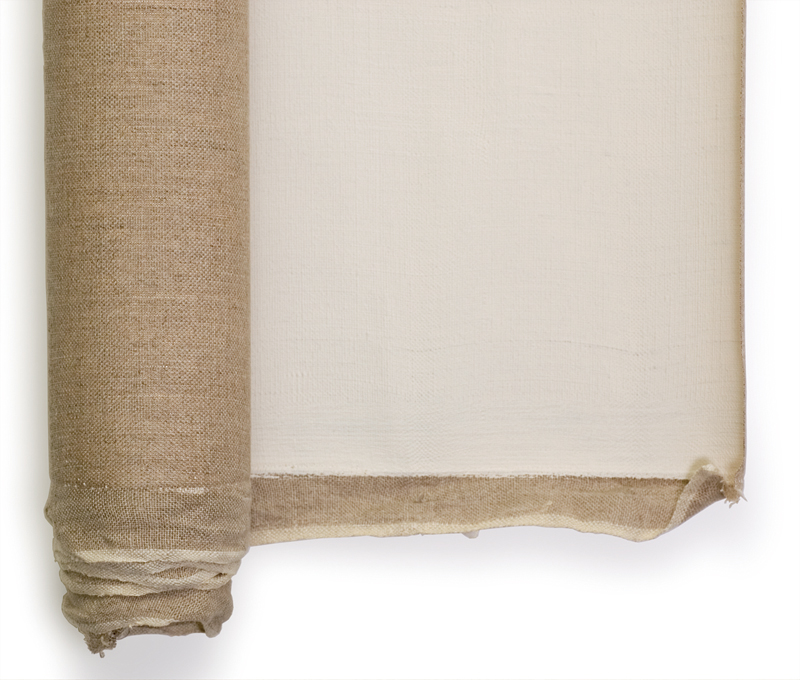 Canvas
Canvas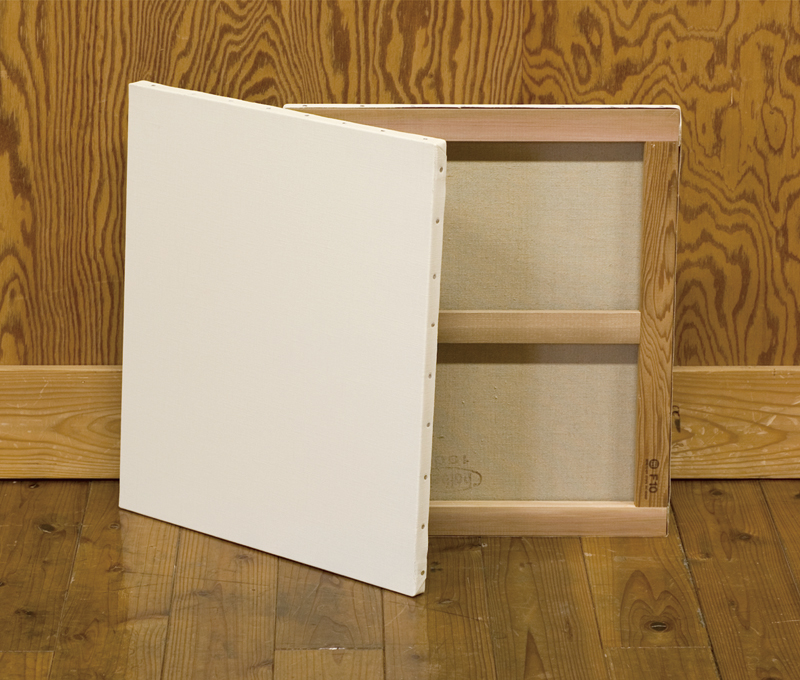 Stretched canvas
Stretched canvas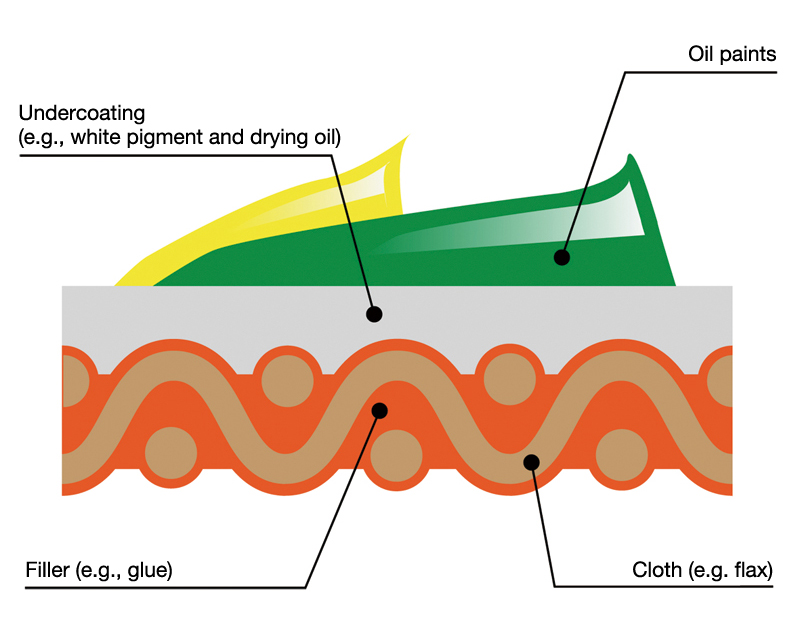 Cross-section of canvas (illustration)
Cross-section of canvas (illustration)- Canvas types
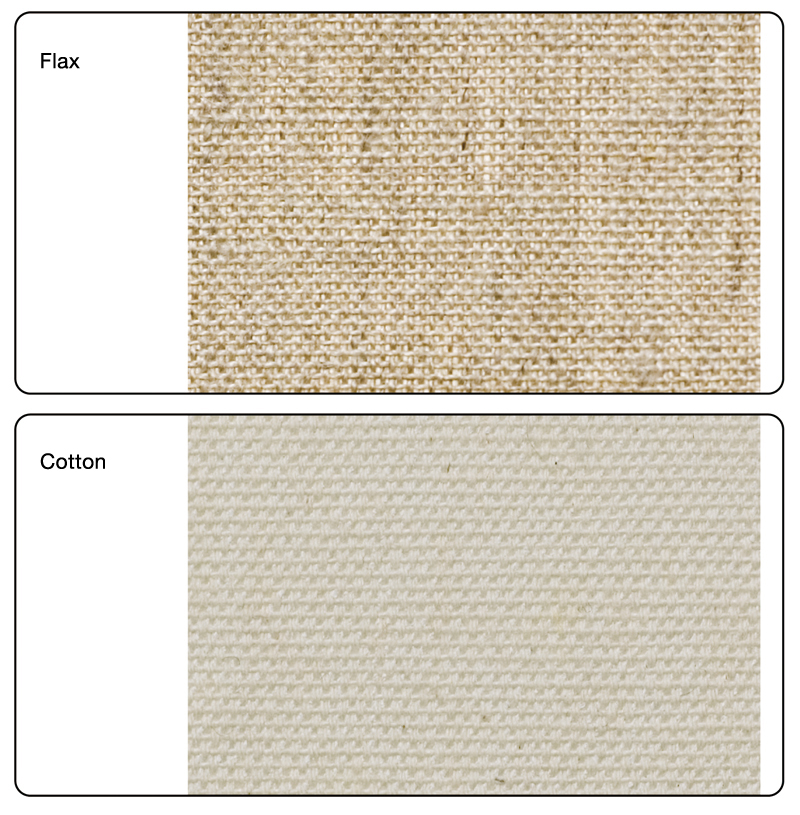
- Primary canvas textures
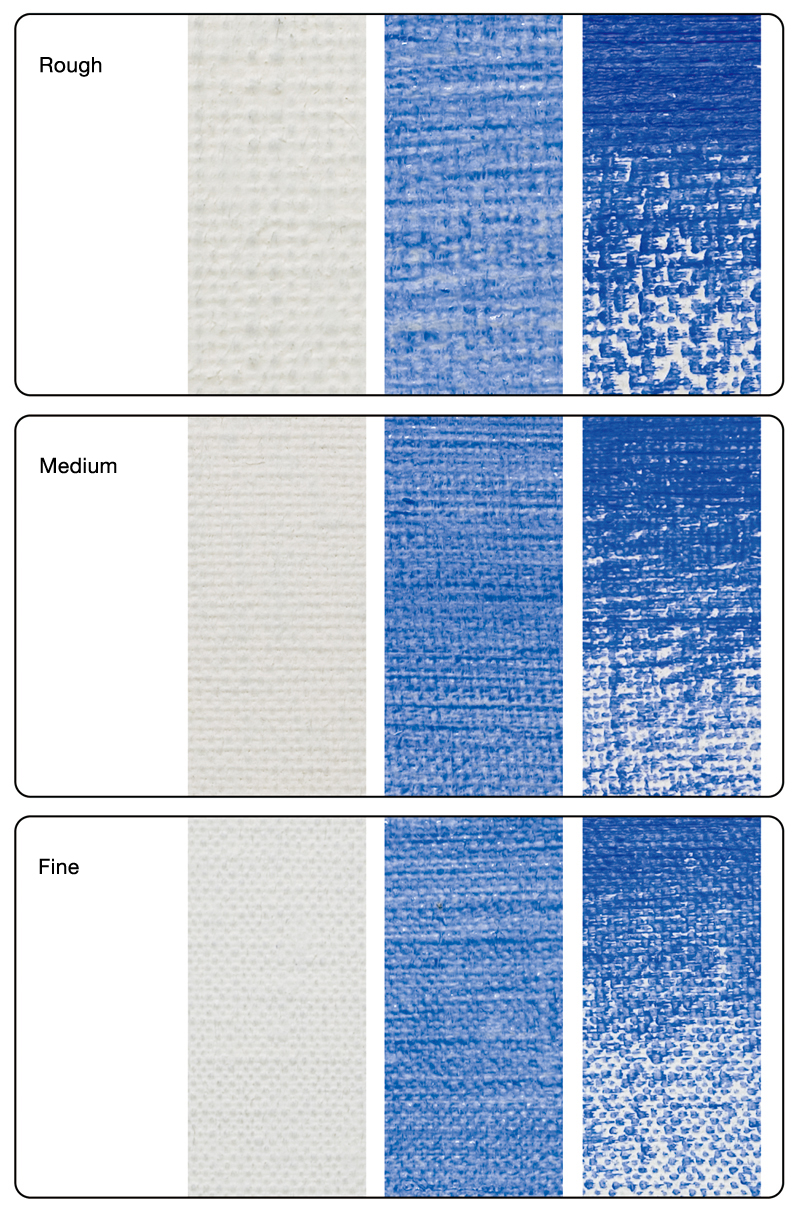
- Rolling a completed canvas for storage
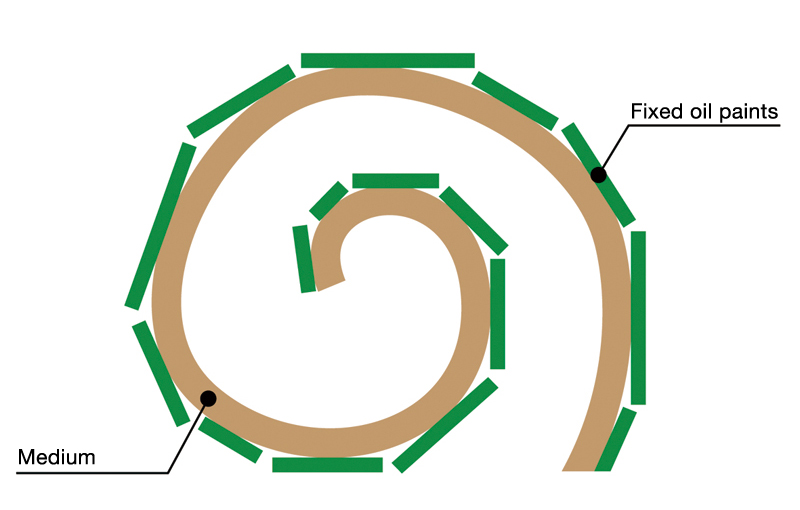 Rolling a canvas with the image facing outward reduces stresses on the paint
Rolling a canvas with the image facing outward reduces stresses on the paint
